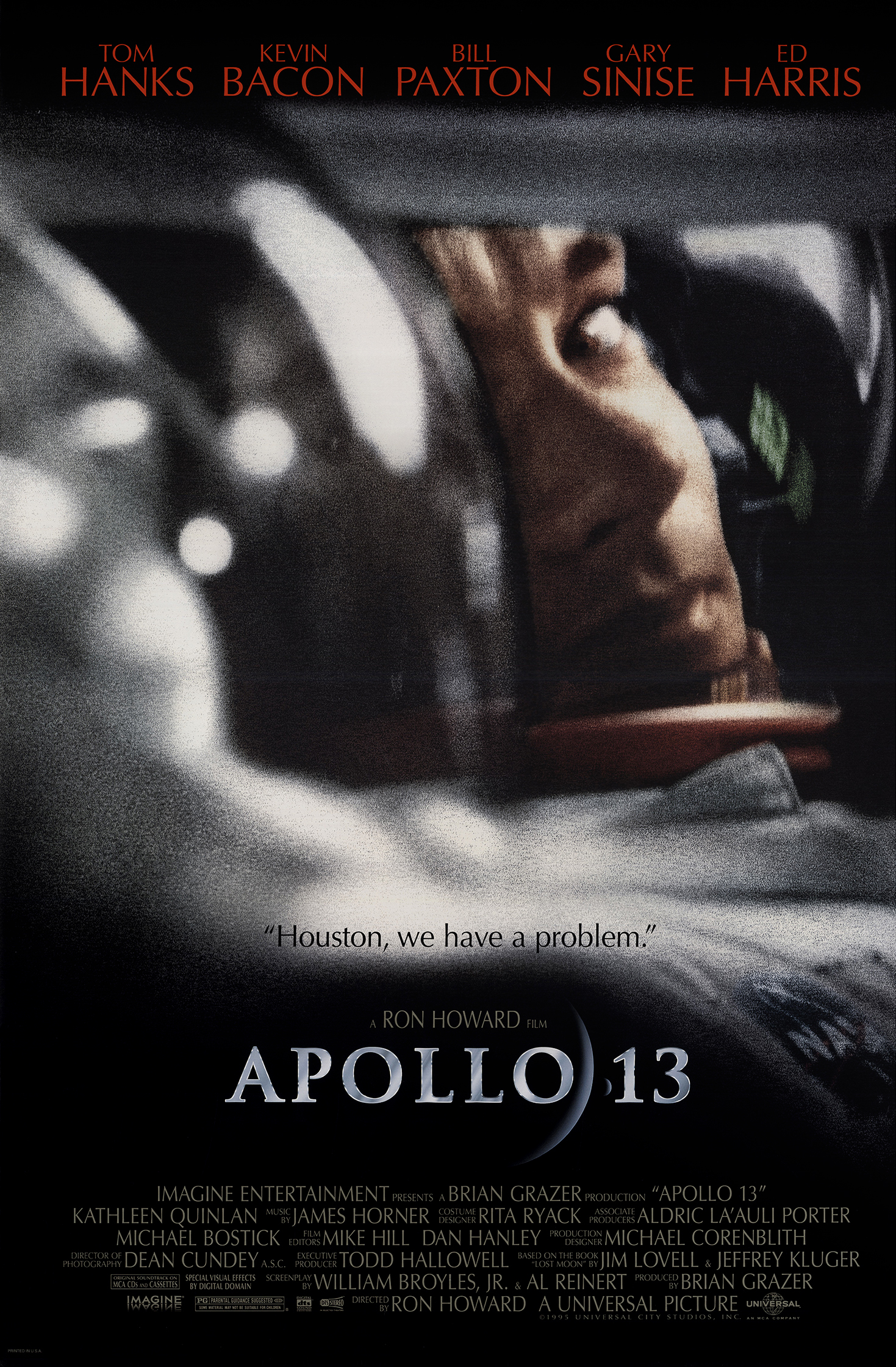“Apollo 13” (1995): A Gripping Odyssey of Survival and Innovation – Film Review

Ron Howard’s “Apollo 13,” released in 1995, stands as a testament to human resilience, ingenuity, and the unyielding spirit of exploration. Starring Tom Hanks, Kevin Bacon, and Bill Paxton as astronauts Jim Lovell, Jack Swigert, and Fred Haise, respectively, the film recounts the harrowing journey of the Apollo 13 mission—a lunar voyage that veered on the brink of disaster. Through meticulous attention to detail, stellar performances, and groundbreaking production techniques, “Apollo 13” not only dramatizes a pivotal moment in space history but also pays homage to the behind-the-scenes heroes at NASA.
Creating Zero Gravity: A Technical Marvel
One of the film’s most remarkable achievements is its authentic portrayal of zero gravity. Unlike many space-themed films that rely heavily on wires and digital effects, “Apollo 13” achieved this realism through filming aboard a KC-135 airplane, affectionately known as the “Vomit Comet.” This aircraft, operated by NASA, was designed to create brief periods of weightlessness, approximately 23 seconds at a time, by flying in parabolic arcs.
Director Ron Howard and his team embarked on an ambitious plan to shoot key scenes of the film aboard the KC-135, making “Apollo 13” one of the first films to use actual weightless conditions to depict space travel. This approach required the cast and crew to adapt to the physically demanding conditions, undergoing multiple flights to capture the essence of life aboard the ill-fated spacecraft. The result is a series of sequences that offer audiences an unparalleled sense of authenticity and immersion.
Behind the Scenes: A Dedication to Authenticity
The commitment to realism didn’t stop at zero gravity. “Apollo 13” benefited from extensive collaboration with NASA, ensuring that every detail, from the spacecraft’s design to the technical jargon used by the astronauts and mission control, was as accurate as possible. The production team worked closely with Jim Lovell and other Apollo 13 personnel to capture the mission’s events and emotions accurately.
Moreover, the film utilized practical effects and models to recreate the spacecraft and its components. The attention to detail in the set design, costumes, and props contributed to the film’s immersive quality, transporting viewers directly into the heart of the mission.
Performance and Character: The Human Heart of “Apollo 13”
At its core, “Apollo 13” is a human story, and its success is anchored by the compelling performances of its cast. Tom Hanks delivers a commanding portrayal of Jim Lovell, embodying the astronaut’s leadership and determination. Kevin Bacon and Bill Paxton complement Hanks superbly, capturing the camaraderie, tension, and sheer will to survive that defined the experiences of the Apollo 13 crew.
Equally important is the portrayal of the ground crew, with Ed Harris as flight director Gene Kranz and Gary Sinise as Ken Mattingly. Their performances underscore the collective effort required to avert tragedy, highlighting the unsung heroes of mission control.
Impact and Legacy
“Apollo 13” not only garnered critical acclaim and commercial success but also played a pivotal role in rekindling public interest in space exploration. The film’s technical achievements, coupled with its emotionally resonant narrative, have left an enduring impact on the portrayal of space missions in cinema.
By marrying groundbreaking production techniques with a deeply human story, “Apollo 13” transcends the typical boundaries of the historical drama genre. It stands as a tribute to the courage of the Apollo 13 crew and the ingenuity of those who worked tirelessly to bring them home, reminding us of the incredible feats humanity is capable of when united by a common goal.
Through “Apollo 13,” audiences are not merely spectators but participants in a journey that showcases the best of human ingenuity, courage, and the relentless pursuit of exploration. It’s a film that continues to inspire awe and admiration, capturing the imagination of viewers and serving as a poignant reminder of space exploration’s inherent risks and rewards.




